Death’s impact reverberates universally across all living beings. When the soul departs, the body transforms into mere substance. What remains after the body’s incineration?
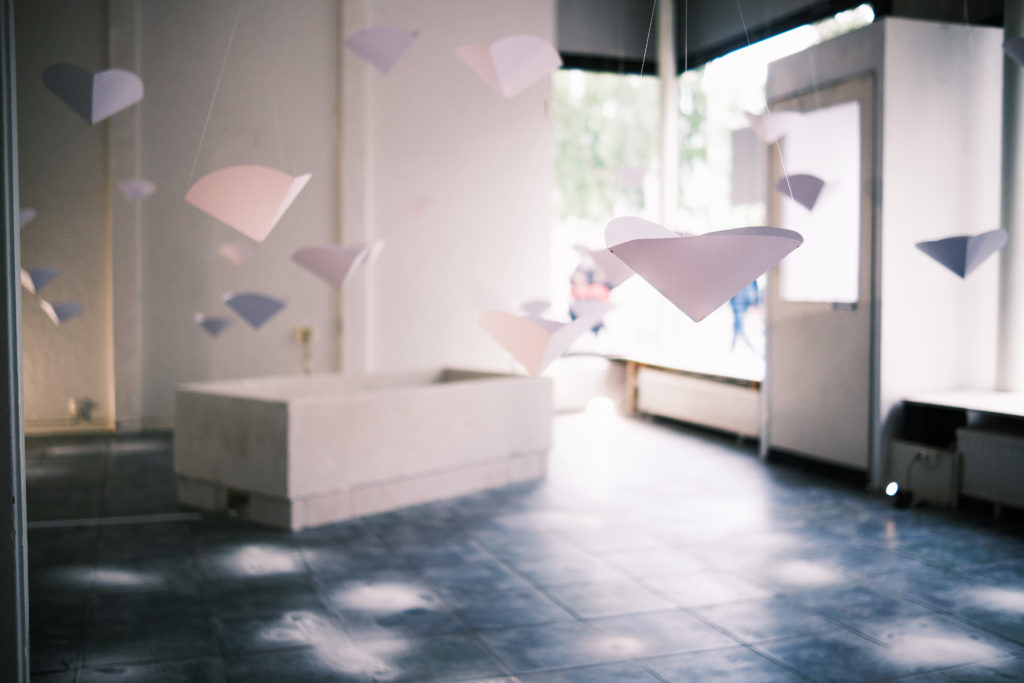
“Absence” by Yui Yamamoto stands as a captivating installation that delves into themes of death, mourning, and the rituals surrounding the departed. Through this work, Yamamoto prompts viewers to engage with the installation, inviting reflection on the passage of time.
Hailing from Japan, Yui Yamamoto is an artist based in London, drawing from a diverse background encompassing social sciences, performance art, and design. Her multidisciplinary approach encompasses live performances, installations, and site-responsive creations. As an East Asian woman, she challenges traditional submissive portrayals, projecting both herself and her objects as expressions of existence through performance.
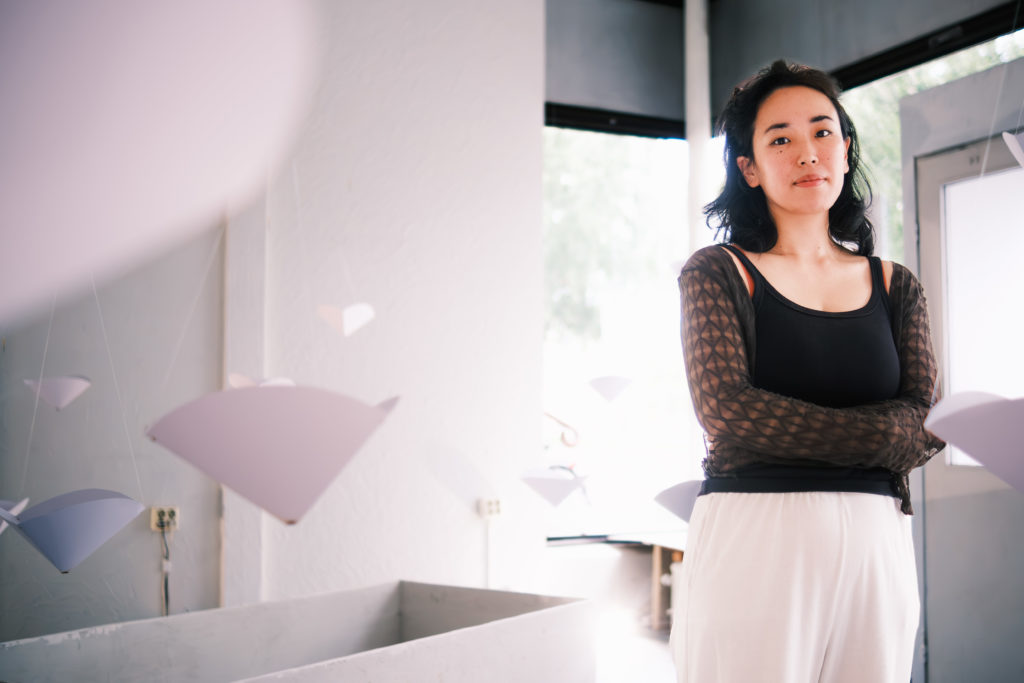
This installation’s genesis stems from personal experiences of loss within the family and the subsequent mourning. Conceived during a two-month residency in Vaasa, a peripheral town on Finland’s west coast, the project occupies the project space of the Platform rf association. This space, located on Vasa’s culturally vibrant street, is transformed into a ceremonial setting through meticulous white paintwork, setting the tone for the visitors.
The installation’s birth aligns with Japan’s Obon festival, a time for remembrance, coinciding with Vaasa’s Night of the Arts. Inspired by both events and a family member’s passing, Yamamoto constructs a ceremonial space, using symbolic elements like caskets, ash, fire, and hourglasses to explore her confrontation with loss.
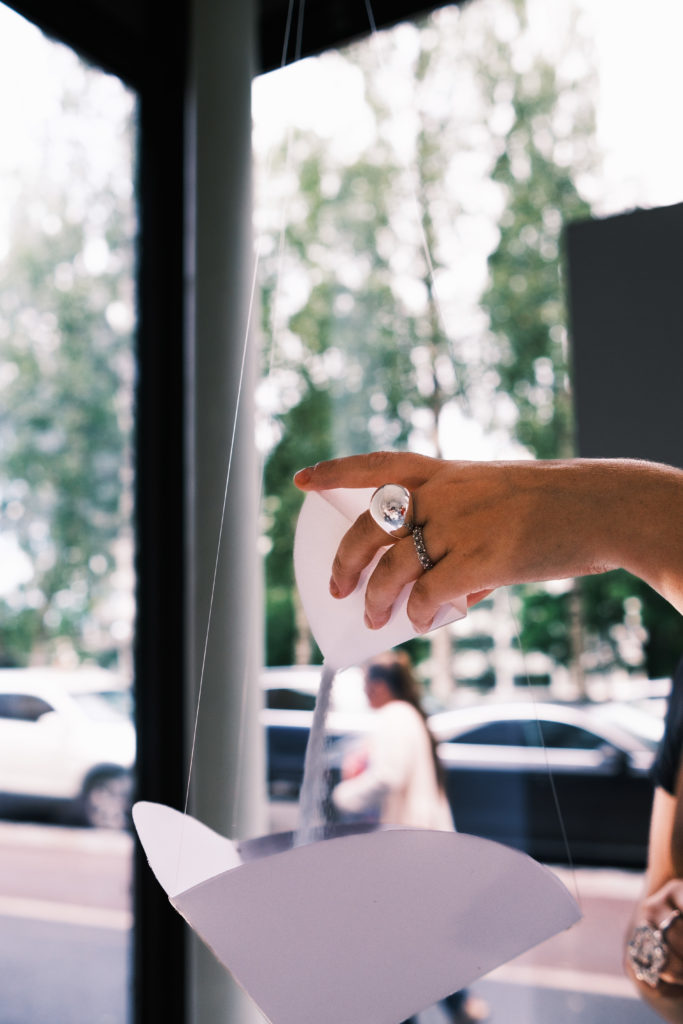
Nearly 30 paper bowls, resembling hourglasses, dangle from the ceiling, releasing a delicate stream of salt to accumulate on the floor below. This imagery symbolizes fragility and the fleeting nature of time. A wooden coffin with a tactile, raw exterior sits nearby, filled with plaster-molded leaves and twigs, reminiscent of bone fragments left after cremation.
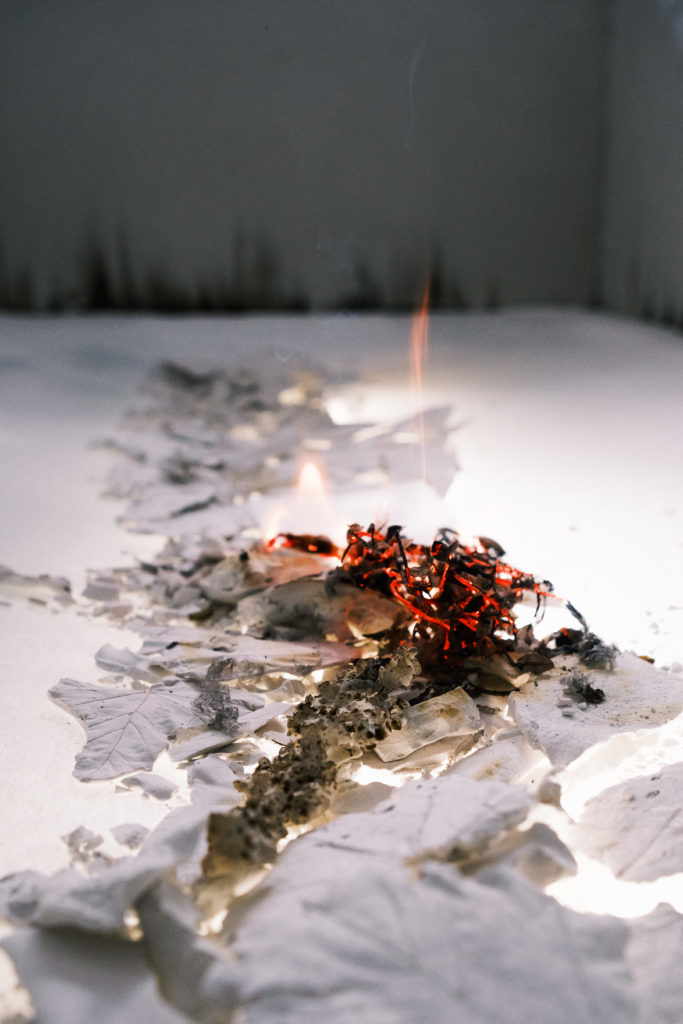
Yamamoto’s meticulousnes extends to the details, where controlled burns enhance the sense of ceremonial cremation on both the paper bowls and the coffin. The pervasive scent of fire seems to permeate the room, amplifying the experience.
The artist’s foundation in performance and social sciences is evident in the engagement she fosters. Each visitor becomes an active participant, pouring salt into the hanging bowls, observing its descent. The strategic placement of the coffin guides natural movement through the space, while the paper bowls imbue an ethereal, floating ambiance.
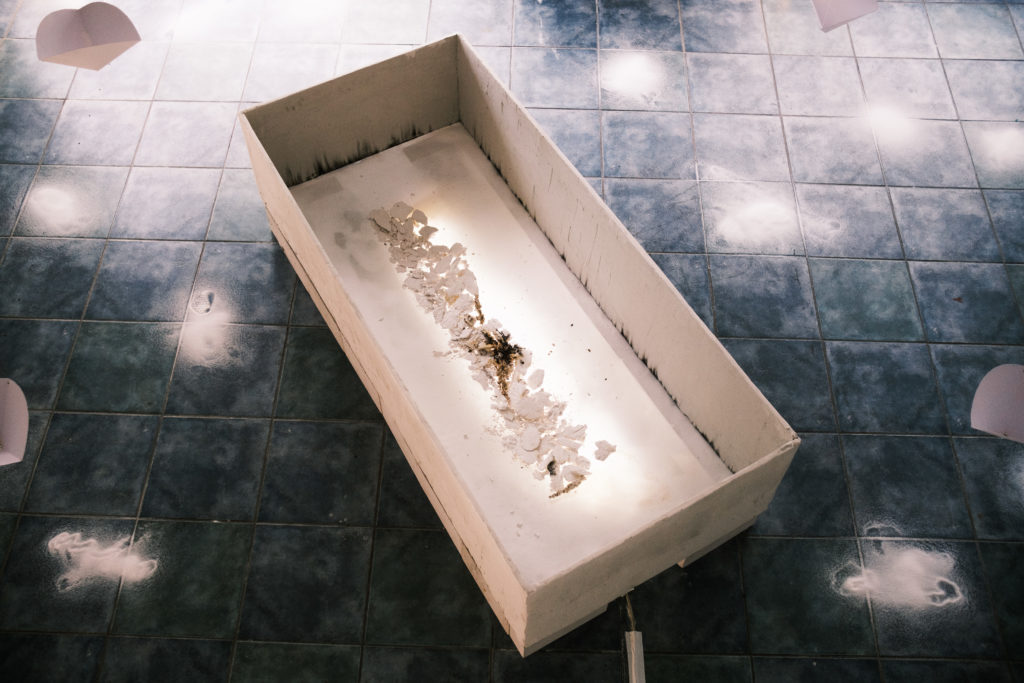 Material choices—putty for the coffin’s stone-like appearance and plaster for bone fragments—underscore Yamamoto’s careful consideration.
Material choices—putty for the coffin’s stone-like appearance and plaster for bone fragments—underscore Yamamoto’s careful consideration.
The installation’s impact becomes evident as visitors shed their reserve, interacting with and discussing the work. The combination of tactile engagement and thought-provoking content prompts emotional responses. As one spectator put it, “Time stops and moves very fast at the same time in here.”

Notably, parallels can be drawn to Japanese artist Matoi Yamamoto, who crafts intricate installations from salt in tribute to his deceased sister. His work, like Yui Yamamoto’s, explores healing through art.
Strengths of “Absence” lie in its elegant simplicity, meticulous arrangement, and the depth found within the details. It flourishes as visitors infuse life into the installation, while minor disruptions in the room’s ambiance serve as its only weakness.
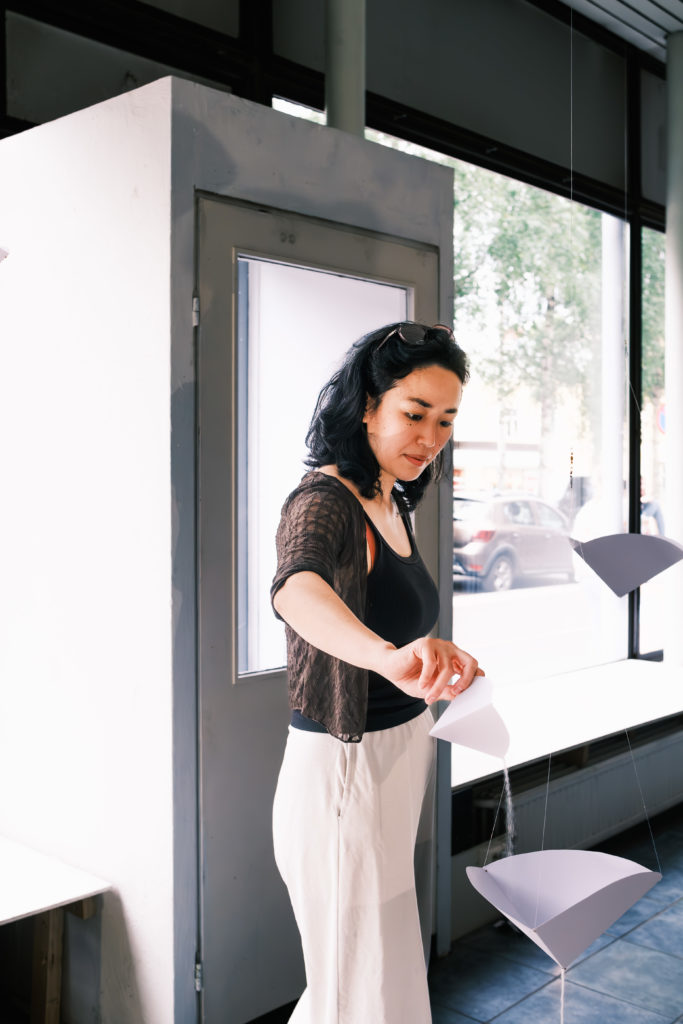
Despite a constrained timeline and unfamiliarity with the Art Night event, Yui Yamamoto succeeds in crafting an exquisite, inclusive masterpiece that resonates deeply with visitors.
In summation, “Absence” by Yui Yamamoto invites viewers to contemplate the profound impact of death, creating an immersive experience that bridges personal reflection with shared emotions.
Text: Jenni Österlund
Pictures: Jonny Huggare Smeds
